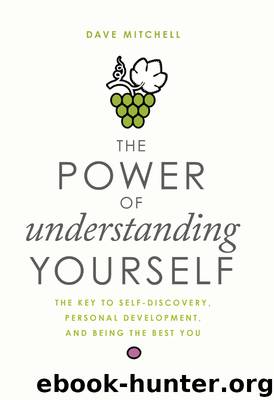The Power of Understanding Yourself by Dave Mitchell

Author:Dave Mitchell
Language: eng
Format: epub
ISBN: 9781119516378
Publisher: Wiley
Published: 2018-11-09T00:00:00+00:00
Here’s why each of these topics are important, starting with “complementary versus contrasting balance.” This analysis revolves around the relationship between your primary (lowest score) style and your secondary (next lowest) style. Although there exist no opposites in style preference – despite the insistence of some assessment tools to display results in quadrants – there are certainly styles that are radically different. The Expert style, with its sensitivity to facts and desire to avoid mistakes, is quite divergent from the Mastermind’s acceptance of possibilities and risk. The Romantic style of consensus building and tactful dialogue is markedly distinct from the Warrior’s directness and focus on results. If your primary and secondary styles include these disparate components – Expert and Mastermind or Romantic and Warrior – then you are working with a contrasting balance. If your primary and secondary style do not combine the diverse elements, then you have a complementary balance. The details of this will be explained in the following chapters.
Although the examples in the preceding paragraph offer the most obvious contrasting balance dynamics, all combinations of primary and secondary preferences can create meaningful considerations. We will examine this impact for each of the 12 styles.
Preferences versus vulnerabilities is another important consideration when involved in metacognition. Interactive style acts as a filter for reality in many ways. It is obvious if you think about it. If you are emotionally sensitive, like the Romantic, then you notice the feelings in other people and the environment at large. This sensitivity gives rise to preferences within your surrounds and influences your behaviors. This can make you especially adept at certain things, unnecessarily responsive to certain things, and completely unaware of yet other things. The better we understand how we construct our personal delusion and the ramifications of that, the more we can make use of our gifts – and minimize our peccadilloes.
Finally, we will explore the influence that our interactive style has on resiliency. To evaluate this, let’s first begin by defining resilience for the purposes of this book. Remember the stew story in Chapter 2, “It’s Your Fault”? We know that life will eventually confront us with unpleasant circumstances. That is inevitable. Resiliency is our ability to respond to these events in a constructive way and return to a healthy orientation with a minimal toxic impact on our physical, mental, and emotional well being. A large part of resiliency is reaching a better understanding the role stress plays in our lives. Whereas the symptoms of stress can be well defined, the cause of stress and our means of coping versus strategies for successfully managing stress are more personal. Our ability to identify stress triggers and execute effective strategies for responding to, even preventing, stress is essential to our resilency. Our conversation on internal locus of control provides the foundation for achieving that goal.
Download
This site does not store any files on its server. We only index and link to content provided by other sites. Please contact the content providers to delete copyright contents if any and email us, we'll remove relevant links or contents immediately.
Hit Refresh by Satya Nadella(9041)
The Compound Effect by Darren Hardy(8818)
Change Your Questions, Change Your Life by Marilee Adams(7638)
Nudge - Improving Decisions about Health, Wealth, and Happiness by Thaler Sunstein(7622)
The Black Swan by Nassim Nicholas Taleb(7016)
Deep Work by Cal Newport(6888)
Daring Greatly by Brene Brown(6451)
Rich Dad Poor Dad by Robert T. Kiyosaki(6414)
Principles: Life and Work by Ray Dalio(6226)
Playing to Win_ How Strategy Really Works by A.G. Lafley & Roger L. Martin(5937)
Man-made Catastrophes and Risk Information Concealment by Dmitry Chernov & Didier Sornette(5926)
Digital Minimalism by Cal Newport;(5667)
Big Magic: Creative Living Beyond Fear by Elizabeth Gilbert(5616)
The Myth of the Strong Leader by Archie Brown(5429)
The Slight Edge by Jeff Olson(5353)
Discipline Equals Freedom by Jocko Willink(5289)
The Motivation Myth by Jeff Haden(5158)
Stone's Rules by Roger Stone(5027)
The Laws of Human Nature by Robert Greene(5003)
